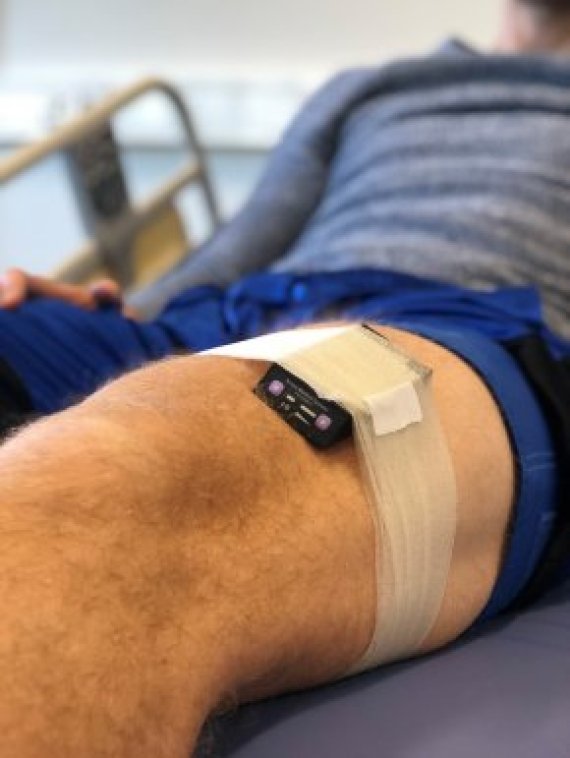The older we get, the more the quality of our muscles deteriorates. This is because the mitochondria – our cells’ power stations – don’t function as well as they did, Bart Lagerwaard has established.
Lagerwaard, a PhD student in the Human and Animal Physiology chair group, studies aging in humans. It was already known that our muscle mass diminishes as we get older, but we don’t know what makes the quality of the muscles deteriorate. Is it because elderly people don’t use their muscles as much, or does the quality of our muscle cells worsen? Lagerwaard focused on the functioning of the mitochondria. They convert sugars and fats into energy with the aid of oxygen, enabling them to produce muscle strength.
Samples
Until now, researchers measured muscle strength by extracting samples of muscle tissue from the thighs of test subjects and testing in the lab how much oxygen the muscle tissue used. It was not easy for researchers to find volunteers for this invasive method. What is more, they could not easily measure muscle development and recovery over time this way. Lagerwaard tested a method using Near Infrared Spectroscopy, using a small piece of apparatus to measure the amount of oxygen the haemoglobin in the blood delivers to the muscles. In fact he is then measuring the oxygen consumption of the mitochondria in the muscle cells.
Calves
Lagerwaard tested the muscles of 20 young men and 20 old men using this gadget. He selected elderly test subjects who were just as physically active as the young ones. The test revealed that the older mitochondria in the thighs and calves recover more slowly than the mitochondria of the young people. There was not much difference in the recovery time of muscle in the shin, however. ‘Not all muscles age in the same way, which is interesting,’ says Lagerwaard, who wants now to do laboratory analyses to find out why. The study also made clear that the more exercise elderly people get, the better their mitochondria function. Seniors who get a lot of exercise not only have more muscles than their peers, but their muscles absorb oxygen better.
Not all muscles age in the same way
Women
Lagerwaard did not test any women because women have a thicker layer of subcutaneous fat, and the Near Infra-Red Spectrometer can only measure up to two centimetres under the skin. He is now working on a new spectrometer that can measure deeper under the skin. If tests on young women with the new meter are successful, he will also measure the aging process in women’s muscles. Lagerwaard: ‘We need to know what happens in muscles as they age so that we can give better advice on what kind of exercise and diet most helps people stay healthy and fit in old age.’

 Photo: Bart Lagerwaard
Photo: Bart Lagerwaard